Burkina Faso
Burkina Faso literally “Country of honest Men”, also called Burkina, formerly republic of Upper Volta, is a country in West Africa without access to the sea. It is surrounded by: Mali to the north-west, Niger to the northeast, Benin to the southeast, Togo to the southeast, Ghana to the south, and Côte d’Ivoire to the southwest. The capital Ouagadougou is located in the center of the country. Burkina Faso is a member of the African Union (AU), the Economic Community of West African States (ECOWAS), the Organization for the Harmonization of Business Law in Africa (OHADA) and the ‘Organization of Islamic Cooperation. It is one of the ten least developed countries in the world, with a human development index of 0.402 in 2015.
Burkina Faso’s history
Prehistoric period
As for all of West Africa, Burkina Faso experienced very early settlement, with hunter-gatherers in the northwest part of the country (12,000 to 5,000 years before the Christian era), and tools (scrapers, chisels and points) were discovered in 1973. Sedentarization appeared between 3,600 and 2,600 before the Christian era with farmers, whose traces of construction suggested a relatively permanent installation. The use of iron, ceramic and polished stone developed between 1,500 and 1,000 before the Christian era, as well as the appearance of spiritual concerns, as evidenced by the burial remains discovered. Vestiges attributed to the Dogons have been discovered in the Center-North, North and North-West region. However, they left the sector between the fifteenth century and the sixteenth century to settle in the cliff of Bandiagara. In addition, remains of walls are located in the southwest of Burkina Faso (as well as in Ivory Coast), but their builders have so far been unable to be identified with certainty. The ruins of Loropéni, located near the borders of Côte d’Ivoire and Ghana, are today recognized as a World Heritage Site.
Burkina Faso’s politics
The Constitution of June 2, 1991, adopted by referendum, established a semi-presidential two-chamber regime open to multiparty politics: the president of Faso “(Faso” replaces the word “republic”), elected by the people for five years in a two-round ballot. He should only be able to be re-elected once; the National Assembly is the only legislative body in the country. It can be dissolved by the President of Burkina Faso; the house of representatives which had an advisory role was renewed every three years and was dissolved on January 23, 2002. But the constitutional revision of June 11, 2012 reintroduced a second room, the Senate, which is not yet functional. It should be noted that since its adoption on June 2, 1992, the constitution of Burkina Faso was revised three times respectively in January 1997 to lift the lock on the limitation of the presidential mandate, April 2000 to not only reduce the duration of the presidential mandate of 7 to 5 years and also to re-introduce its limitation to renewable once, January 2002. There is also a constitutional council made up of ten members and an economic and social council whose role is purely advisory.
Burkina Faso’s economy
Burkina Faso is a developing country, where agriculture accounts for 32% of gross domestic product and employs 80% of the working population. It is mainly livestock but also, especially in the south and southwest, crops of sorghum, millet, corn, peanuts, rice. It was the second African cotton producer behind Egypt, despite the aridity of the soils. The cotton sector, in many producing countries has gained strength, with excellent harvests, even if on the world market, the price of a pound of fiber in 2015 was around 0.70 dollar, relatively low compared to the peak from the 2 dollars per pound it had reached in 2011. The country was in first place among the top seven African cotton producers in the mid-2010s. In 2015, almost 100,000 farmers practiced organic farming.
In 2017, Burkina Faso was ranked 146th by the Doing business program in terms of business and is the 134th country where life is best (2017). Burkina Faso has a very large diaspora: for example, three million Burkinabè live in Ghana, three million also live in Côte d’Ivoire and 1.5 million in Sudan. According to the central bank of West African states, these migrants repatriate tens of billions of CFA francs each year to Burkina Faso. Since the expulsions from Ghana in 1967, this situation has also caused tensions with the host countries. The last crisis dates back to the events of 2003 in Côte d’Ivoire, which resulted in the punctual return of 300,000 migrants. A third of the country’s population lives below the poverty line. It should also be mentioned some mining productions: copper, iron, zinc and especially gold (the country has just opened its fifth mine). In the late 1990s, Canadian “junior companies”, invested in more than 8,000 mining properties, in more than 100 countries, most of which were still in the planning stage, multiplied contracts with African countries. In Burkina, they are called Axmin, Orezone Resources, Goldcrest Resources or Etruscan Resources, and are often present in neighboring countries because Burkina is a geological extension of the rich gold zone of Ghana. Burkina Faso is a member of the West African Economic and Monetary Union and the Liptako-Gourma Authority, which is responsible for preventing food crises and droughts through the cooperation of each member country.
Some economic data: GDP: $ 10.678 billion in 201579; GDP per capita: $ 640 in 2015; GDP in purchasing power parity (PPP): $ 1,185 (2007, Quebec, Institut de la Statistique); Real growth rate: 5.2% in 2016; Inflation rate (consumer price index): 6.40% (2006); Exports: $ 1.591 billion in 2011; Imports: $ 2.25 billion in 2011. Human Development Index (HDI) in 2012: 183rd out of 187 countries classified.
Burkina Faso’s demography
Population: 19,512,533 inhabitants (in 2016). 0-14 years: 45.04%; 15-64 years: 52.52%; + 65 years: 2.44% Density: 71.16 inhabitants / km2 Pop growth rate. : 3.01% (in 2016) Migration rate: – 0.97 ‰ (in 2001).
Burkina Faso’s education
Illiteracy is the majority in Burkina Faso. It is more common among women. The majority of students are boys. According to law 13-2007 / AN on the education orientation law, the Burkinabé education system is structured as follows:
Basic education
It includes formal basic education and non-formal basic education. It is compulsory for all children from 6 to 13 years old. Formal basic education has three levels : the first level is preschool education from 3 to 6 years old. This level has three sections. The small section for children from three to four years old, the medium section for those from four to five years old and the large section for those from 5 to 6 years old; the second level is primary education from 6 to 12 years old. It is sanctioned by the Certificate of Primary Studies (CEP). The primary school enrollment rate for the period from 2007 to 2009 was 64% according to UNICEF statistical data. The gross enrollment rate rose to 77.6% in 2011 and then to 79.6% in 2012. Despite this progress, a large number of children do not always have access to education. In 2011/2012, 1,112,184 children aged 6 to 11 were outside the school system83; The third level is post-primary education from 12 to 16 years old and is certified by the Brevet d’études du premier cycle (BEPC). As for non-formal basic education, it includes: literacy and development training for people over 15 who learn to read and count in one of the main national languages; non-formal basic education for young people and adolescents and alternative non-formal basic education formulas. It takes care of children from 9 to 15 years old who are out of school or out of school by giving them access to a complete cycle of basic education, mainly practical and professional, in national languages articulated with the learning of French of a duration which can reach four years.
Secondary education
Secondary education is sanctioned by the baccalaureate and includes three paths: the general route: it constitutes a single three-year cycle and makes it possible to obtain the baccalaureate diploma from one of the series: A, C, D, E and F; the technological path: it is also a single three-year cycle and leads to the baccalaureate diploma in series E, F, G, H; the vocational route, also called technical and vocational secondary education (ESTP). It constitutes the vocational training component of the secondary school education system and comprises three (3) cycles aimed at professional integration. It includes the CAP cycle (CEP + 4 years), the BEP cycle (BEPC or CAP + 2 years) and the Professional Baccalaureate cycle (BEP + 2 years).
Higher Education
It includes universities, institutes and grandes écoles. Burkina Faso has four public universities: the University of Ouagadougou, the dean of the universities, created in 1974; Nazi Boni University, created in 1997; Norbert-Zongo University created in 2005, renamed Norbert Zongo University on November 30, 2017 by the representative of the Head of State Chériff Sy; Ouaga II University, created in 2007. Three university centers created in the interior of the country support the four universities. It is that of Fada N’Gourma which trains in the field of mines, that of Ouahigouya which trains in the field of the tertiary and health and that of Dédougou which trains in the field of agriculture.
Burkina Faso’s languages
French is the main language of institutions, administrative, political and legal bodies, public services, texts and press releases from the State, the written press and writers. It is the only language written by laws, administration and the courts. In addition, Burkina Faso is a member of the International Organization of the Francophonie as well as of the Parliamentary Assembly of the Francophonie. According to a 2003 CIA estimate, only 21.8% of the population aged 15 and over can read and write, plus the net enrollment rate (that is, over a given age group) , despite a constant increase for several years, is only 47.70% for the 2005-2006 school year, hence the fact that French is only understood by approximately 15% of the population, of which only 5% of real French speakers according to the General Delegation for the French language and the languages of France. Despite the numerical superiority of national languages, the status of official language and that of international language means that French is gradually weighing more and more in the social and economic life of the country. French enjoys a social status associated with participation in the modern world. It is the language of social advancement.
According to the latest OIF report, French is increasingly becoming the first language of Burkinabè: thus, only 20,947 people declared French as the first language commonly spoken in 1985 (i.e. 0.42% of the country’s population) , 49,647 in 1996 (0.75%), then 151,184 in 2006 (1.66%), including 104,700 in Ouagadougou (or 9.54% of Ouagalais). According to André Magord and Rodrigue Landry, “In recent years, in major cities such as Ouagadougou, Bobo and Banfora, the French language has spread to other communication situations than those just described. Faced with the increasingly multilingual dimension of these cities, French is increasingly becoming the lingua franca among traders and during trade related to all the small trades that are multiplying in these big cities. The spoken French language is no longer standard French, but a French which, without the basis of the written word, is transformed and partly reinvented. This expansion of French is relayed by the billboard very present in the cities and which offers slogans in French. These slogans quickly became popular in a Burkinabe society with a strong oral tradition. This variety of endogenous French which results from linguistic hybridization is a pidgin in the process of creolization.
As in the neighboring country, Ivory Coast appeared a popular French in Burkina Faso. In this French, sometimes called “French of Ouaga” and which remains essentially an oral language, a certain number of interferences have been created between standard French and popular French of Burkina because of the influence of African languages in practice. local French. We are witnessing more and more mixed marriages constituting families whose first language is French. Finally, the Association of Municipalities of Burkina Faso-AMBF as well as the cities of Bobo-Dioulasso, Koudougou, Ouagadougou, Tenkodogo, Banfora, Dédougou, Manga, Ouahigouya and Yako are members of the International Association of Francophone Mayors.
There are more than 60 languages, the main ones being: the Moré language spoken by the Mossis, the San spoken by the Samos, the Peul spoken by the Fulani, the gourmantché spoken by the Gourmantchés in eastern Burkina Faso, the Dagara spoken by the Dagaras, Dioula which is a language common to several West African countries (Ivory Coast, Mali, Guinea…) spoken by the Dioulas, the Lobiri spoken by the Lobis, the Marka or soninké spoken by the Markas (Soninkés) commonly called “Dafing”, the boho, the bwamu spoken by the Bwabas, the Sénoufo spoken by the Sénoufos, the toussian spoken by the Toussians, the kassena and the lyélé spoken by the Gourounsis and the bissa spoken by the Bissas.
-
Burkina Faso
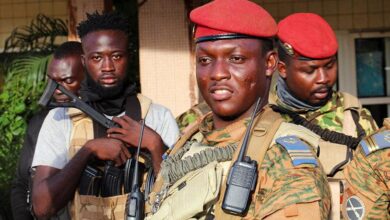
Burkina Faso’s Interim President Ibrahim Traore Hails Russia As A Strategic Ally
Burkina Faso’s interim President Ibrahim Traore on Thursday hailed Russia as a key strategic ally but denied the accusation that…
Read More » -
Burkina Faso

Burkina Faso’s Army Confirms Suspected Jihadists Kill 33 Soldiers In Latest Attack
Burkina Faso’s army said in a statement that at least 33 soldiers were killed and 12 wounded in an attack…
Read More » -
Burkina Faso
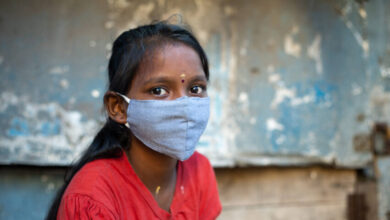
UNICEF: 10 Million Children Threatened By Insecurity In Central Sahel Region
The United Nations Children’s Fund (UNICEF) on Friday said that at least ten million children living in Central Sahel’s Burkina…
Read More » -
Burkina Faso
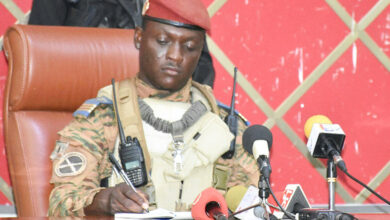
Burkina Faso’s Military Government To Recruit 5,000 Soldiers To Fight Jihadists
Burkina Faso’s military government on Thursday announced a recruitment drive for 5,000 military soldiers to help in the fight against…
Read More » -
Burkina Faso
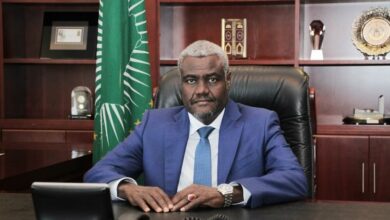
AU To Meet To Discuss Sanctions Imposed On Burkina Faso, Guinea & Mali
The African Union (AU) Commission Chairperson Moussa Faki Mahamat on Friday said the bloc will soon meet to discuss whether…
Read More » -
Burkina Faso
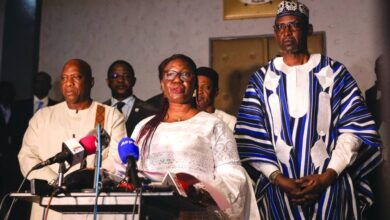
Foreign Ministers From Burkian Faso, Guinea, And Mali Calls For Reentry To Regional Blocs
Foreign Ministers from three West African countries on Thursday called for their reinstatement into two key regional blocs following a…
Read More » -
Burkina Faso
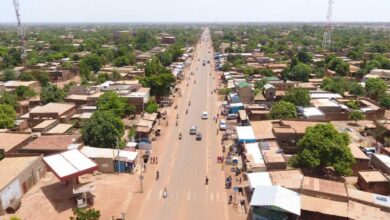
Burkina Faso’s Military Says 28 Soldiers, Civilians Killed In Two Rebel Attacks During Weekend
Burkina Faso’s military on Monday said at least 28 people, including soldiers and civilians, have been killed in two attacks…
Read More » -
Burkina Faso
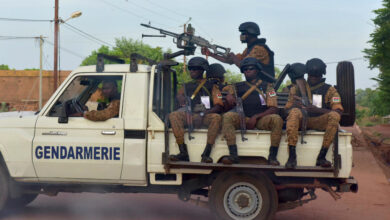
France Agrees To Withdraw Military Troops, Recall Its Envoy From Burkina Faso
France has said it will withdraw its troops from Burkina Faso within a month after the West African country’s military…
Read More » -
Burkina Faso
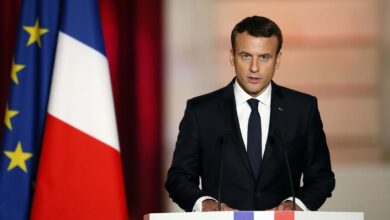
French President Says Waiting For An Explanation From Burkina Faso On Troops
French President Emmanuel Macron on Sunday said that he is waiting for an explanation from Burkina Faso after its military…
Read More » -
Burkina Faso

Burkina Faso’s Military Junta Asks France To Withdraw Troops From The Country
Burkina Faso’s military government has asked France to withdraw its troops stationed in the West African country to leave within…
Read More » -
Burkina Faso
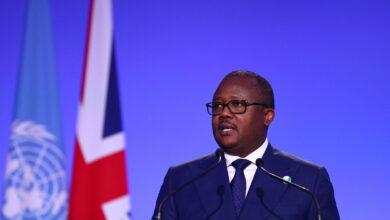
ECOWAS Leader Umaro Sissoco Embalo Expresses Support For Coup-Hit Burkina Faso
ECOWAS leader and Guinea-Bissau President Umaro Sissoco Embalo have expressed support for Burkina Faso less than five months after an…
Read More » -
Burkina Faso
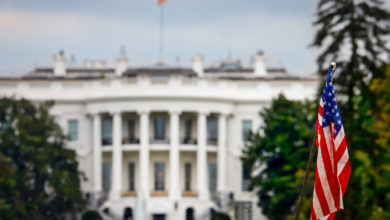
US Drops Burkina Faso From Trade Program Over Unconstitutional Change In Government
The United States (US) has reportedly dropped Burkina Faso from its trade preference programme citing deep concerns over unconstitutional change…
Read More » -
Burkina Faso

Burkina Faso: Ten Killed After Passenger Bus Hits Landmine On Christmas Day
The Burkina Faso government on Monday announced ten people were killed and several got injured when a passenger bus triggered…
Read More » -
Burkina Faso
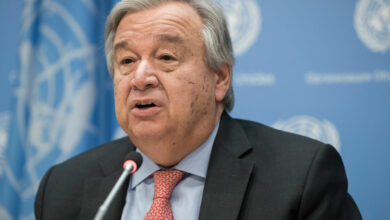
UN Says Burkina Faso Government Has No Grounds To Expel Senior Official
The United Nations (UN) on Saturday said the Burkina Faso government had no grounds to ask senior U.N. official Barbara…
Read More » -
Burkina Faso

Burkina Faso’s Military Government Expels Senior UN Official Barbara Manzi
Burkina Faso’s military government on Friday ordered senior United Nations (UN) official Barbara Manzi to leave the country immediately, without…
Read More » -
Burkina Faso

Ghana’s President Accuses Burkina Faso Of Inviting Mercenaries From Wagner Group
Ghana’s President Nana Akufo-Addo has accused Burkina Faso of inviting in mercenaries from Russian firm Wagner, reported The TRT World.…
Read More » -
Burkina Faso

Burkina Faso’s Military Leader: Fight For Total Independence Has Started
Burkina Faso’s military junta head, Ibrahim Traoré, on Sunday said the fight for total independence began a few weeks ago,…
Read More » -
Burkina Faso

Burkina Faso’s Interim President Traore Confirms Recent Failed Coup Attempt
Burkina Faso’s interim leader, Captain Ibrahim Traore, on Thursday revealed that he was the target of a coup attempt last…
Read More » -
Burkina Faso
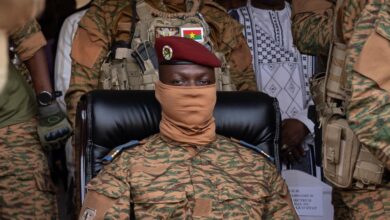
Burkina Faso’s Coup Leader Traore Sworn-In As Country’s New Interim President
Burkina Faso’s young coup leader, Ibrahim Traore, was sworn-in as the country’s new interim president on Friday, reported The France…
Read More » -
Burkina Faso

Burkina Faso’s Coup Leader Traore To Be Sworn In As Interim President On Friday
Burkina Faso’s young army captain who led the latest coup, Ibrahim Traore, will get sworn-in as the country’s new interim…
Read More » -
Burkina Faso

Burkina Faso’s National Forum Declares Ibrahim Traore As Transitional President
Burkina Faso’s national forum on Friday unanimously declared coup leader Captain Ibrahim Traoré as the country’s transitional president, reported The…
Read More » -
Burkina Faso

National Meeting Begin In Burkina Faso To Appoint New Transitional President
A national meeting has begun in Burkina Faso on Friday to appoint a transitional president who will serve the country…
Read More » -
Burkina Faso

Burkina Faso’s New Transitional President To Be Picked Soon, Says Decree
Burkina Faso’s new military leader Captain Ibrahim Traore on Saturday signed a decree that calls for a national meeting next…
Read More » -
Burkina Faso
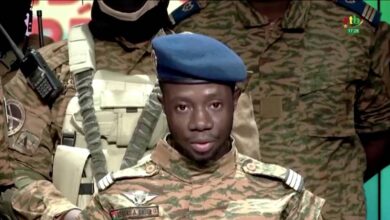
Burkina Faso’s Military Warns Citizens Not To Circulate Rumors & False Information
Burkina Faso’s military on Thursday warned the people of the country not to circulate rumors and false information amid claims…
Read More » -
Burkina Faso
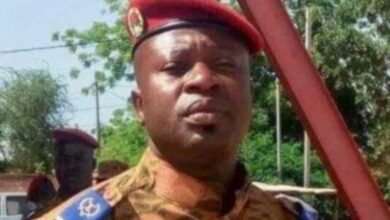
Burkina Faso’s Damiba Steps Down Two Days After Coup Removes Him From Power
Burkina Faso’s junta leader Paul-Henri Sandaogo Damiba on Sunday agreed to step down, two days after military officers ousted him…
Read More »

